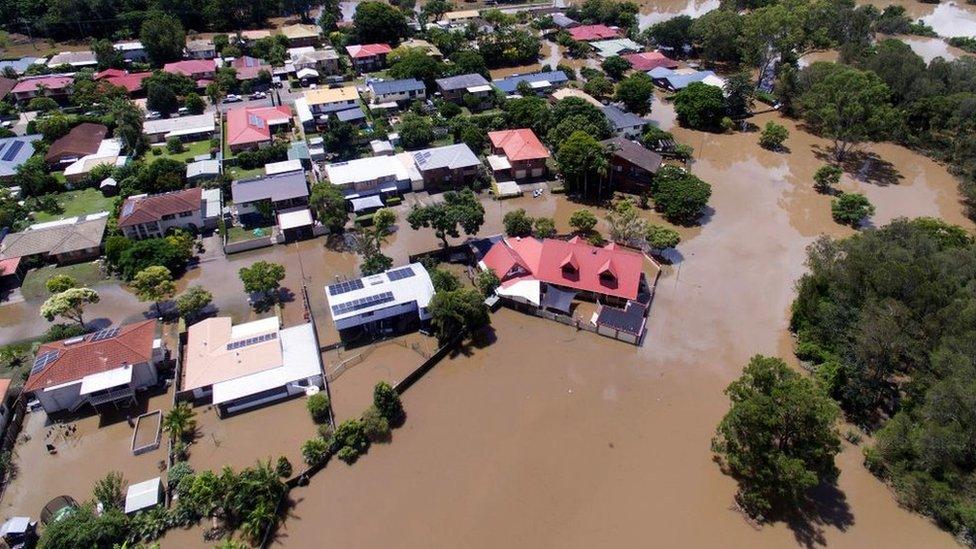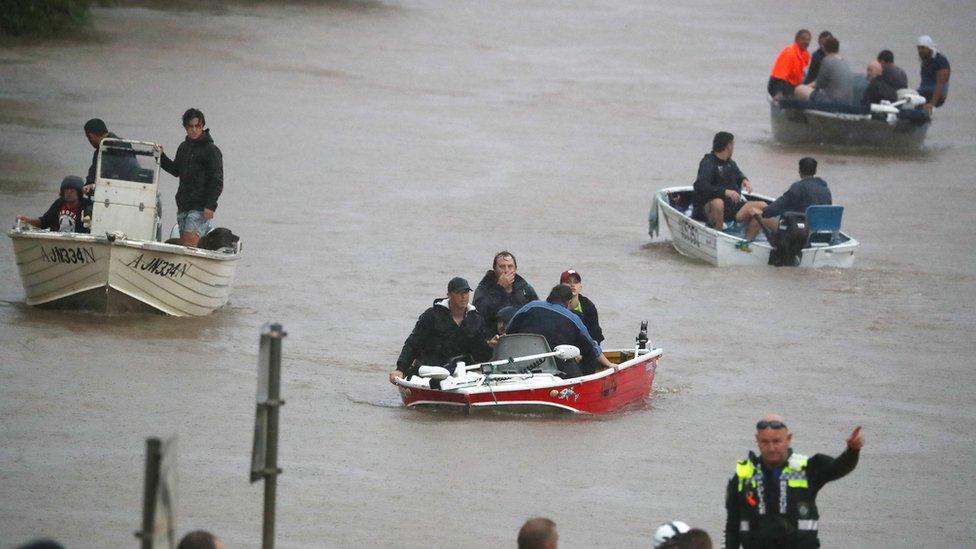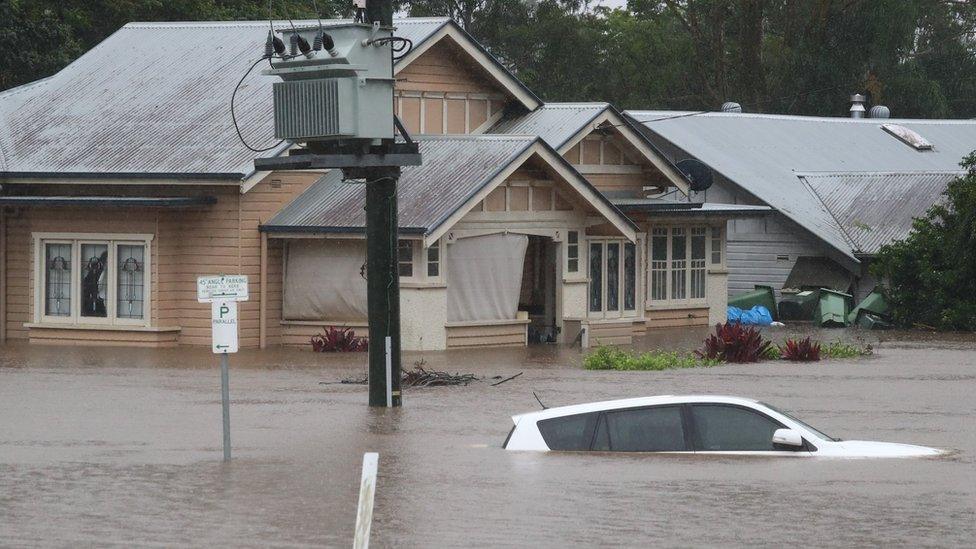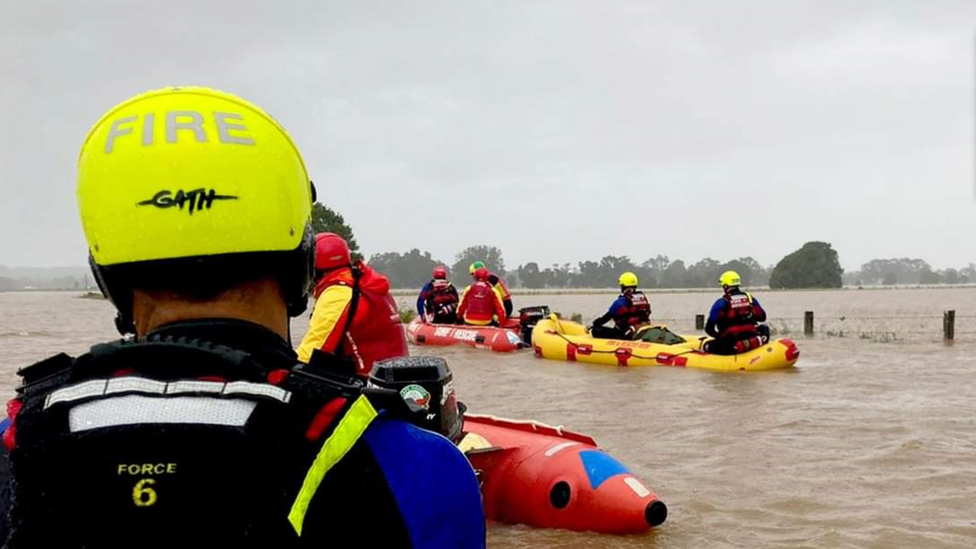Record-breaking Australian floods leave thousands without power
- Published
- comments

The areas of Corinda and Oxley are seen flooded in Brisbane, Australia, on 1 March
Rescue services in eastern Australia have been helping tackle record-breaking floods after heavy rainfall left at least 20,000 homes underwater.
Parts of the state of Queensland have had six months' of rainfall in two days.
Tens of thousands of residents in the state are still without power.
With the storm now moving south, residents of Australia's largest city, Sydney, have been told to prepare for heavy flooding.

Thousands of people have had to evacuate their homes - even by boat - after floods hit the states of Queensland and New South Wales
At least 11 people have died since the extreme weather arrived late last week.
Dozens of people who sought safety on the roofs of their homes have been rescued by military helicopters.
The leader of neighbouring state New South Wales, Premier Dominic Perrottet, urged people in Sydney to evacuate if they are given the order by emergency crews.
The water levels in Sydney's rivers were expected to start peaking on Wednesday evening.

Flooding in the town of Lismore, New South Wales, has left homes and cars underwater
Australia has experienced a lot of extreme weather in recent years, which scientists believe have been caused by climate change.
Droughts, bushfires, coral bleaching on the Great Barrier Reef and floods have become more common and severe.
Because a warmer atmosphere holds more water, scientists say climate change increases the risk of flooding from extreme rainfall.
- Published17 January 2022

- Published22 March 2021

- Published9 April 2020

